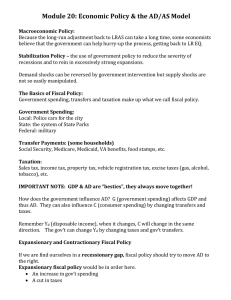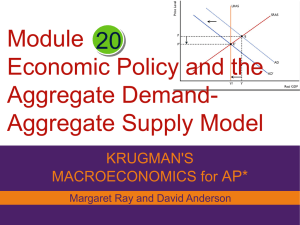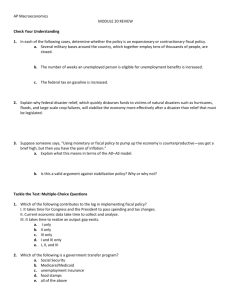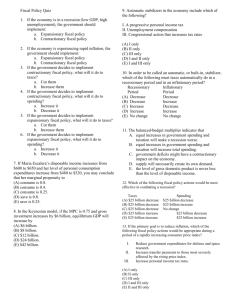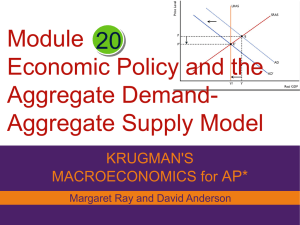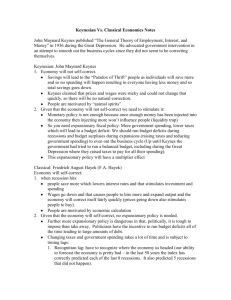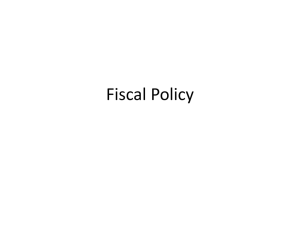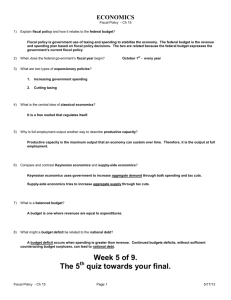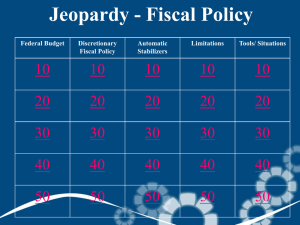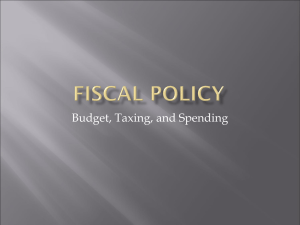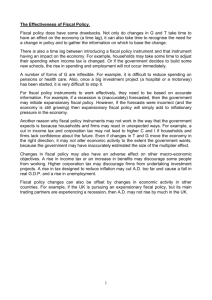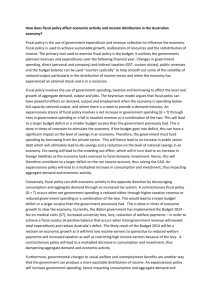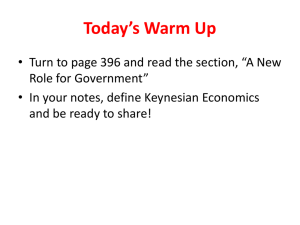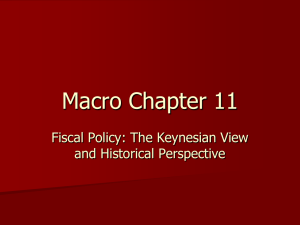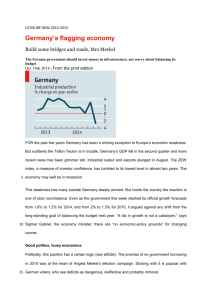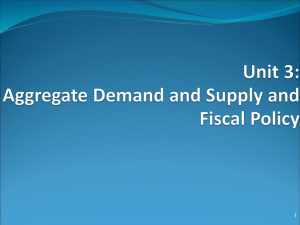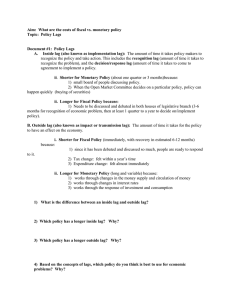Problems, Criticisms, and Complications
advertisement
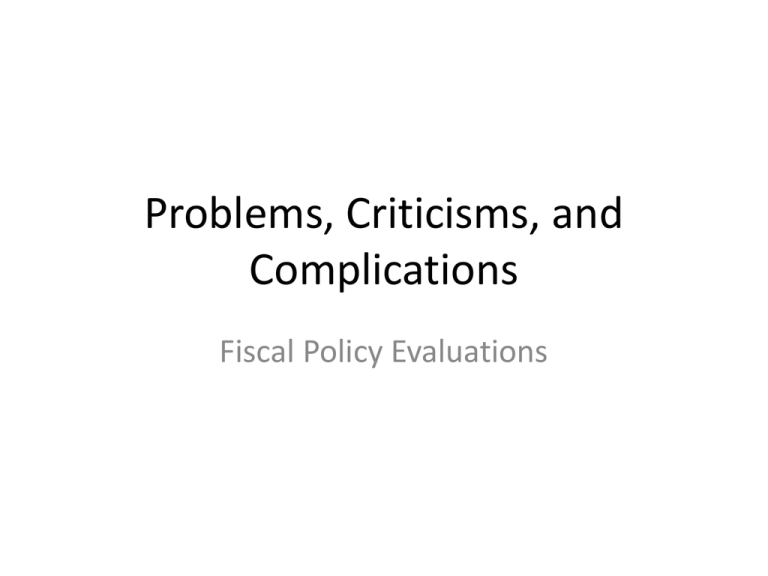
Problems, Criticisms, and Complications Fiscal Policy Evaluations Why is it so Hard for the Government to Enact and Apply Fiscal Policy Timing Politics Offsetting Governments CrowdingOut Effect Net Export Effect Shocks from Abroad 1) Timing (Lag-time) Recognition Lag Administrative Lag Operational Lag Recognition Lag • The time between the beginning of recession or inflation and the awareness that it is actually occurring. • This happens because of the difficulty in predicting the future course of economic activity. Administrative Lag • The time between the recognition of the need for fiscal action and the time action is taken. • This is a downside of democracy. It might take months or years for policies to work their way through the legislative process. Operational Lag • It occurs between the time when fiscal action is taken and when the action takes effect on output, employment, or the price level. • Government spending requires long planning periods and even longer periods of construction. • While tax rates can be implemented quickly, people might take time to alter Consumption. 2. Politics • Politicians want to get re-elected, and often overlook the best economic course for the most politically beneficial course. • The political business cycle emerges, where politicians may cause inappropriate changes in AD and cause economic fluctuations, especially around elections. 3. Offsetting Governments • At times of recession, provincial governments might increase taxes or impose new taxes to offset lower tax revenues resulting from the reduced personal income and spending of their citizens. • The Federal government might be increasing government spending, but the higher local taxes restrict AD and GDP from expanding. 4. Crowding-Out Effect • An expansionary fiscal policy may increase the interest rate and reduce spending, thereby weakening or canceling the stimulus of the expansionary policy. • Expansionary fiscal policy involves the government taking loans. Increase in public loans drives up the demand for loans and increases interest rates. • Investment spending and interest rates are inversely related so some investment will be "crowded" out. 5. Net-Export Effect • An expansionary fiscal policy resulting from a tax cut or an increase in government spending will shift AD right, this raises prices. • Foreigners will demand fewer goods because of the increased price level, which decreases net exports, and shifts AD left. • Expansionary fiscal policy intended to increase C/G/Ig, may be offset by decreased Xn. 6. Shocks from Abroad / Overseas • Events and policies abroad can shock our economy and cause unforeseen increases or decreases in aggregate demand. • If foreign countries enact spending measures to stimulate their local consumption, our XN might rise and vice versa. • We can be mutually interdependent. Supply-Side Fiscal Policy: Business & Personal Tax Cuts • Tax changes that affect the aggregate supply curve (AS). • Tax cuts might shift AS right and negate the effect of inflation, while increasing economic growth (GDP) 1. Savings & Investment 2. Work Incentives 3. Risk-Taking Questions for Exam and Test Review • Page 275. Questions 7, 8, 9, 11, 12.


